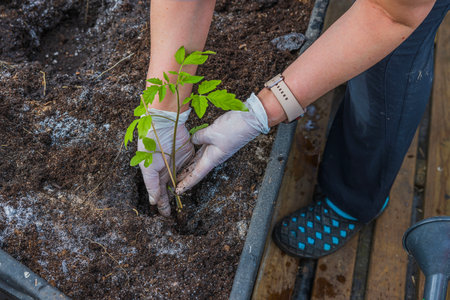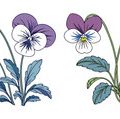1. Site Analysis and Soil Assessment
Before starting a new garden, it’s essential to take a close look at your yard’s natural features. This step helps you make smart choices that save water and support healthy plant growth. Understanding your site’s sun exposure, drainage patterns, and soil type will guide you in creating a garden that uses water efficiently.
Sun Exposure
Observe how much sunlight different areas of your yard receive throughout the day. Some spots may get full sun (6+ hours), while others are shaded most of the time. Knowing this helps you pick the right plants for each zone—sun-loving plants for bright areas and shade-tolerant ones for darker corners.
Drainage Patterns
Watch how water moves through your yard after it rains or after watering. Good drainage is important because standing water can damage plants and waste resources. Look for low spots where water collects or areas that stay soggy longer than others. You can use this information to adjust grading or add swales, rain gardens, or permeable surfaces to better manage runoff.
Soil Type
Your soil plays a big role in how well your garden holds onto water. Test your soil by feeling it with your hands or using a simple jar test at home. Here’s a quick comparison of common soil types:
| Soil Type | Texture | Water Retention | Drainage |
|---|---|---|---|
| Sandy | Gritty, loose | Poor – dries quickly | Excellent – drains fast |
| Clay | Sticky when wet, hard when dry | High – holds water too long | Poor – drains slowly |
| Loam | Mildly crumbly, balanced feel | Good – retains moisture well | Good – drains adequately |
Tip:
If your soil is not ideal, consider adding compost or mulch to improve its structure and water-holding ability.
Putting It All Together
A thorough site analysis helps you plan where to place plants, irrigation systems, and hardscape elements for maximum water efficiency. By working with nature—not against it—you’ll create a beautiful garden that thrives with less water.
2. Plant Selection and Grouping
Choosing the right plants is one of the most important steps in creating a water-efficient garden. To conserve water and support local ecosystems, its best to select native or drought-tolerant plants and group them based on their watering needs.
Why Choose Native and Drought-Tolerant Plants?
Native plants are adapted to your local climate, soil, and rainfall patterns. This means they typically need less water, fertilizer, and maintenance than non-native species. Drought-tolerant plants, whether native or not, are able to thrive with minimal irrigation once established.
By focusing on these types of plants, you not only reduce your water usage but also help create a habitat for local pollinators like bees, butterflies, and birds.
How to Group Plants by Water Needs
Grouping plants with similar water requirements—also known as hydrozoning—helps avoid overwatering or underwatering certain areas of your garden. It also makes irrigation more efficient and easier to manage.
Example of Plant Grouping
| Water Use Zone | Plant Examples | Recommended Location |
|---|---|---|
| Low Water | California poppy, Lavender, Sage | Outer edges of the garden |
| Moderate Water | Coneflower, Yarrow, Black-eyed Susan | Near walkways or patios |
| High Water | Ferns, Hydrangea, Hostas | Shaded or low-lying areas that retain moisture |
Tips for Success
- Research before planting: Check if a plant is native or drought-tolerant in your USDA hardiness zone.
- Avoid mixing water needs: Don’t place high-water plants next to drought-tolerant ones.
- Use mulch: Mulching around plants reduces evaporation and keeps soil moisture consistent.
Smart plant selection and grouping make it easier to maintain a beautiful garden that uses less water and supports your local environment.
![]()
3. Efficient Irrigation Systems
One of the most effective ways to conserve water in new garden installations is by using efficient irrigation systems. Traditional sprinklers often waste water through evaporation, runoff, or watering areas that dont need it. By incorporating smart technologies, you can make sure your plants get exactly the amount of water they need—no more, no less.
Drip Irrigation
Drip irrigation delivers water directly to the base of plants, minimizing evaporation and runoff. This system is perfect for garden beds, shrubs, and even container gardens. It uses a network of tubing with emitters that slowly release water right where its needed.
Benefits of Drip Irrigation:
- Reduces water waste
- Minimizes weed growth by targeting only desired plants
- Improves plant health by avoiding wet foliage
Smart Controllers
Smart irrigation controllers adjust watering schedules based on weather conditions, soil moisture, and plant needs. Many models connect to Wi-Fi and use real-time weather data to skip watering on rainy days or reduce frequency during cooler periods.
Features to Look for in a Smart Controller:
| Feature | Benefit |
|---|---|
| Weather-based scheduling | Avoids unnecessary watering during rain or cool temps |
| Soil moisture sensors | Waters only when soil is dry enough |
| Mobile app control | Allows adjustments anytime from your phone |
Rain Sensors
Rain sensors are simple devices that stop your irrigation system from running during or after rainfall. They’re easy to install and work with most automatic systems. Even a basic rain sensor can save hundreds of gallons of water annually.
By combining these efficient irrigation tools—drip systems, smart controllers, and rain sensors—you’ll not only reduce your garden’s water use but also promote healthier plants and lower your utility bills.
4. Mulching and Soil Improvement
One of the most effective ways to conserve water in your new garden installation is by using mulch and improving your soil. These two practices work together to help your plants thrive while reducing the amount of water they need.
Why Mulch Matters
Mulch acts like a protective blanket over your soil. It keeps moisture from evaporating too quickly, which means you don’t have to water as often. It also helps prevent weeds from growing and competing with your plants for water and nutrients. Organic mulches, like shredded bark or compost, even break down over time and add valuable nutrients to your soil.
Common Types of Organic Mulch
| Type | Benefits | Best Use |
|---|---|---|
| Shredded Bark | Long-lasting, good for moisture retention | Around trees and shrubs |
| Compost | Nutrient-rich, improves soil structure | Vegetable gardens and flower beds |
| Straw | Lightweight, breaks down quickly | Vegetable gardens |
| Pine Needles | Acidic, good for certain plants like azaleas | Under acid-loving plants |
Soil Improvement for Better Water Retention
Healthy soil is the foundation of any water-wise garden. In many areas of the U.S., native soils can be sandy, heavy clay, or compacted—none of which are ideal for holding moisture. By amending your soil with organic matter like compost or well-rotted manure, you can improve its texture, increase its ability to retain water, and provide nutrients that boost plant health.
Tips for Amending Soil
- Test Your Soil: Know what youre working with before adding amendments.
- Add Compost Regularly: A 2- to 3-inch layer mixed into the topsoil each season helps maintain healthy structure.
- Avoid Over-Tilling: Too much tilling can break down soil structure and harm beneficial organisms.
- Use Cover Crops: In off-seasons, plant cover crops like clover to naturally enrich the soil.
The Bottom Line on Mulch and Soil Health
Applying organic mulch and improving your soil not only saves water but also leads to healthier plants and fewer weeds. It’s a simple step that makes a big difference in creating a sustainable, low-maintenance garden that thrives in any climate.
5. Hardscaping and Permeable Surfaces
When planning a water-wise garden, its important to consider how hardscaping—the non-plant elements like paths, patios, and driveways—can impact water conservation. Traditional concrete or asphalt surfaces can cause rainwater to run off instead of soaking into the ground. This runoff often carries pollutants into storm drains and reduces the natural replenishment of groundwater.
To address this, choose permeable materials for your garden’s walkways, patios, and other hardscape features. These materials allow water to pass through and soak into the soil below, helping recharge groundwater and reducing runoff.
Benefits of Permeable Hardscaping
- Reduces Water Runoff: Minimizes erosion and prevents pollution from entering local waterways.
- Supports Groundwater Recharge: Helps replenish local aquifers by allowing rainwater to seep into the earth.
- Improves Soil Health: Promotes better moisture balance in surrounding planting areas.
- Lowers Flooding Risk: Especially helpful in areas prone to heavy rains.
Common Permeable Materials
| Material | Description | Best Uses |
|---|---|---|
| Gravel | Loose rock that allows water to easily filter through | Driveways, pathways, seating areas |
| Decomposed Granite | Crushed stone that compacts slightly but stays permeable | Garden trails, patios, outdoor rooms |
| Pervious Concrete | A special mix that lets water pass through gaps in the surface | Driveways, sidewalks |
| Permeable Pavers | Paving stones with gaps filled with sand or gravel for drainage | Courtyards, walkways, patios |
Design Tips for Using Permeable Surfaces
- Combine Function and Style: Mix textures and colors for visual appeal while staying eco-friendly.
- Create Drainage Zones: Direct water toward planted areas or rain gardens where it can be absorbed naturally.
- Avoid Compaction: Make sure underlying soil isn’t too compacted so water can infiltrate effectively.
- Add Edging: Use edging materials to keep loose aggregates like gravel in place.
Using permeable hardscaping is a smart way to enhance your garden’s beauty while supporting sustainable water practices. It’s a small change that makes a big difference over time.
6. Maintenance Strategies for Water Efficiency
Creating a water-efficient garden doesn’t stop at the design and installation stage. To ensure your landscape continues to conserve water over time, regular maintenance is key. By keeping an eye on your irrigation system, pruning plants properly, and making seasonal adjustments, you can maintain a healthy garden that uses water wisely.
Monitor Irrigation Systems
Regularly check your irrigation system to ensure its working efficiently. Leaks, broken sprinkler heads, or incorrect timer settings can waste a lot of water without you even knowing it. At least once a month during the growing season, inspect your system and make any needed repairs or adjustments.
Quick Irrigation Checklist
| Task | Frequency |
|---|---|
| Check for leaks or broken heads | Monthly |
| Adjust sprinkler direction and coverage | Seasonally |
| Test controller settings | Every 2-3 months |
| Flush drip systems | Twice per year |
Prune for Plant Health and Water Savings
Proper pruning helps plants stay healthy and reduces their water needs. Removing dead or overcrowded branches improves airflow and light penetration, which allows plants to thrive with less stress—and less water. Prune in late winter or early spring before new growth begins for best results.
Make Seasonal Adjustments
Your garden’s water needs change throughout the year. In cooler months, plants require less water. Adjust your irrigation schedule accordingly to avoid overwatering. Many modern irrigation controllers have seasonal adjustment features—take advantage of them to automatically reduce watering times during fall and winter.
Seasonal Watering Guide
| Season | Watering Frequency |
|---|---|
| Spring | 2–3 times per week (as needed) |
| Summer | 3–4 times per week (depending on plant type) |
| Fall | 1–2 times per week (monitor rainfall) |
| Winter | Once every 2 weeks or as needed |
By staying consistent with these maintenance strategies, youll not only conserve water but also promote a thriving and beautiful garden all year long.


